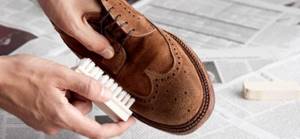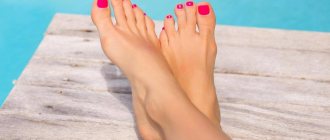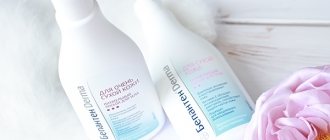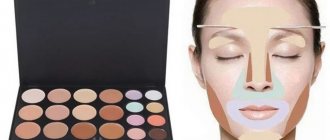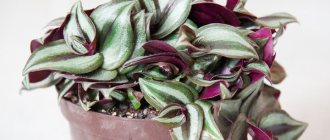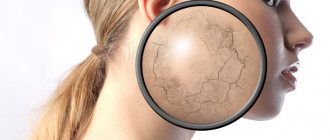Hand and foot care in autumn
It is very important for a woman to take care of her body all year round. Enormous attention should be paid to caring for your hands and feet. It is worth considering that caring for hands and feet at different times of the year has its own differences. Foot care in autumn In
summer, foot care consisted of removing rough skin and maintaining nail polish in proper form. Autumn is the time when we change sandals and shoes for warmer and closed shoes, such as autumn boots. At this time, a problem appears that did not exist in the summer, namely, sweating of the feet. Most women face this problem; the reason for this is synthetic tights and socks. Feet will sweat less if you apply gel-based rather than oil-based moisturizers after a pedicure. It is better to choose moisturizers that contain the following components: horsetail extract, oak bark and juniper. Gels and foot masks made with lavender, menthol and white tea will give results.
Nourishing masks made from cosmetic Vaseline or olive oil will help treat rough skin on the heels. Such masks are applied at night, and in the morning they are simply wiped off with a cotton pad; they should not be washed off. You can make a foot mask based on honey and apple. To do this, mix 1 tablespoon of honey and 3 tablespoons of vegetable oil with grated apple. The resulting mixture is placed on the feet and wrapped for an hour, and then washed off with water. This mask has an excellent moisturizing effect.
Using deodorizing sprays or talcum powder on your feet will help you feel more comfortable throughout the day. Don't forget about a beautiful pedicure. The most suitable varnish color is French or bed tones, but sometimes you can use bright shades to lift your mood.
Hand care in autumn
Hand care in the autumn, like foot care, differs from summer care. Most often, we don’t put on gloves at the first cold snap, hoping that it will soon become warm again, but in vain! During this time, the skin on the back of the hand becomes chapped, turns red and begins to peel. A paraffin bath will be a salvation from such consequences. This procedure can be done in almost any beauty salon, and it is inexpensive. On the dressing table, in addition to moisturizing hand cream, there should also be a nourishing cream. It is better to always carry such a tube in your purse so that you can lubricate your hands if necessary.
An autumn hand cream must include components such as nut oil, calendula, vitamin F, and propolis. It is advisable to make nourishing and moisturizing hand masks several times a week. You can prepare such a mask from natural ingredients. To do this, take 1 tsp. honey, 1 tbsp. milk, the same amount of vegetable oil and 3 tbsp. oatmeal Mix the ingredients until smooth and apply to hands, leaving overnight.
Treatment of nails in the fall is practically no different from a similar summer procedure. It is worth paying attention only to additional moisturizing of the cuticle. It is better to choose varnish colors in bed colors or French manicure.
A woman's arms and legs should always look 100%. And let others not notice it because of gloves and closed shoes, but your own mood and self-esteem will increase significantly!
How to care for your feet in winter?
In winter, our legs lose their attractiveness. Lack of sunbathing, frost, and warm clothes lead to the skin of the legs becoming faded and dry, extra centimeters appearing on the hips, and spider veins on the ankles and shins.
Therefore, during the cold season, our feet need careful care.
We present to your attention several preventive procedures that need to be carried out today so that in the spring your legs will delight you with beauty and a healthy, well-groomed appearance.
Foot care
In winter, there is no need to give up a pedicure. Take baths with oils and emollients twice a week. If you have rough skin and cracked heels, go over the problem areas with a foot sanding file, starting with the coarsest grit and ending with the finest. Then massage your feet with a homemade scrub made from coffee grounds, coarse salt, liquid soap and a drop of essential oil. After this, dry your feet and apply the cream, and while the cream is absorbed, massage your feet.
The foot consists of a large number of ligaments, tendons and muscles. During the day, they bear the main burden, so do not forget about preventive exercises for your feet. Develop your foot muscles and massage them with special massagers. Manual massage is also possible.
Comfortable and high-quality shoes are very important. With such shoes you will forget about swelling, fatigue, calluses, abnormal nail growth and peeling. Shoes must have a correct and comfortable last to avoid deformities of the foot and spine, corns, etc.
Use deodorants and antiperspirants for your feet. This will prevent the occurrence of fungal diseases and relieve discomfort.
Shin care
There are no sebaceous glands in this area, and the skin of the legs dries out. After a shower, it is necessary to moisturize and nourish the skin with cream. If your skin is dry, apply a nourishing cream morning and evening, an hour before leaving the house.
If you suffer from edema, use special creams and gels to prevent varicose veins.
Care for hips and knees
During sedentary work, the skin of the legs loses elasticity, the muscles lose tone, the joints lose mobility, and the knees “stretch out.” During the cold season, the skin of the thighs and buttocks suffers from stagnation and hypothermia, and the knees turn blue.
Carry out the peeling procedure once a week, use a high-quality scrub. Don't forget about firming products and nourishing cream for your thighs. Apply them with massage movements, being careful not to stretch the skin.
Winter sports such as skiing and skating are excellent workouts for toning your legs and maintaining normal blood circulation.
Wrap
Pre-warm the skin on problem areas. This can be done through a shower, sauna, massage or exercise. Then apply a warming composition that includes honey, ginger extract, cosmetic oil, clove and grapefruit essential oils. Wrap the treated area loosely with film and insulate it. You need to be in a “cocoon” state for no more than 20 minutes to avoid strain on the heart. Then the composition must be washed off and the cream applied to dry skin.
Finally
- Remember that hot water only dries out the skin, causes swelling, and overloads the blood vessels and heart. A contrast shower is the best solution.
- The elastic bands of socks, tights and knee socks should not cut into the skin.
- For good blood circulation, exercise, massage and leg exercises.
- If your feet are dry, use moisturizing care products and walk barefoot at home.
- Wear high-quality shoes, regularly use foot care cosmetics: powders, gels, foot deodorants, etc.
Tips for caring for your feet in autumn
1. Avoid overcooling your feet. Since rain and cold will begin soon, you need to take care of your health. This applies, naturally, to the legs. You need to choose shoes that are appropriate for the season and comfortable. It is advisable to buy roomy shoes so that your toes are not squashed. In fact, this way they cannot freeze quickly.
2. Foot massage. It is necessary so that your legs can rest after a hard day at work. If possible, you can visit the SPA salon. A bath also allows you to relax, not only your legs, but your whole body will rest.
3. Choose the right cosmetics. Since the cold season is approaching, almost all people, including women, hide their legs, put on tights, socks, trousers, etc. They mostly wear synthetics, which causes their feet to dry out and become rough. By choosing the right lotion and cream for your feet, your skin will be moisturized and pleasant to the touch. If your feet have become very dry, then you need to purchase exfoliating products that will help rid the skin of your feet of dead and dead cells. If you don’t have this at hand, you can use foot files or pumice, but without much zeal, otherwise you can damage the skin. It is worth noting that after summer many people develop unhealed cracks. Various means do not always cope with them. You can also take celandine into account. You need to grind it in a meat grinder, squeeze out the juice and pour it through a large layer of gauze into a container that can be closed very tightly. You need to let the juice brew for a week. Then you can open and use the so-called “tincture”, lubricating the cracks and damaged areas of the skin. Cracks heal in 2 to 5 days.
4. Elevated legs while sleeping. Of course, not everyone likes their legs to be higher than their torso while sleeping. But this action can prevent the appearance of varicose veins and help prolong the beauty and youth of the skin of your legs.
5. It is necessary to drink enough liquid. Fulfilling this condition will allow you to maintain the necessary water balance in the skin and additionally give it shine. Water will also help cleanse the body of harmful and toxic substances.
6. Get rid of sweating. This question is especially relevant. In the warm season, the skin of the feet could breathe, since most of the shoes were all open (flip-flops, sandals, sandals). Also, in the summer, feet are washed a sufficient number of times. In autumn, your feet feel comfortable in warm shoes (boots, ankle boots) outside. But when entering a warm room, your feet may immediately begin to sweat. During this time, you need to stock up on various sprays and deodorants, but if they cannot eliminate this problem, then you will have to take more care of your feet. If you have to work in an office, then it is best, of course, to take replacement shoes with you - depending on the room temperature. Another way out of this situation may be to prefer shoes made of genuine leather, but it is worth noting that not everyone has the opportunity to buy things made from this material. In the evening, after washing your feet, you can use cooling gels or masks based on green tea and juniper.
7. Foot baths. It would be good for the legs if they took them every day with some useful ingredients. But most either do not have enough time for these slow procedures, or are completely lazy to properly care for their feet. Still, there are excellent recipes that will help your legs relax and gain strength. You need to make an installation for yourself, do this procedure at least once a week. The following recipes will help you get rid of calluses.
Weekly foot skin care
In winter, when we wear heavy, insulated shoes and our feet alternate between cold and overheat, the skin becomes keratinized and becomes too thick. The best way to get rid of excess skin is by taking regular care of your feet. Start with a softening foot bath. Once a week, prepare a foot bath with warm water containing oil, bath salts, moisturizing oils or antiseptics available at orthopedic shoe stores and pharmacies. After about 10-15 minutes of soaking your feet, take care to remove the epidermis. To do this, you will need a finger file with loops, a file with an abrasive side, or a foot scrub. But the file should not be rough, since friction using an abrasive file or strong peeling is much safer.
The main mistake made by overzealous people is to eliminate the epidermis too often and excessively. This practice brings the opposite effect. Too often the epidermis is removed, it grows at a faster rate and if interrupted by strong friction, the skin becomes susceptible to fungi and bacteria. Therefore, it is better to stick to the rules. Remove the epidermis regularly, on average once a week or once every week and a half, not more often. You will very quickly notice the effect of such procedures.
Foot care in autumn
When autumn comes, and the weather gets colder every day, you have to gradually give up light and open summer shoes, increasingly giving preference to more closed and warm models that are no longer able to provide the former “summer” comfort. It is also quite common to wear waterproof shoes, which protect your feet from getting wet when it rains outside, but they usually do not provide a sufficient level of ventilation, which is very detrimental to the health of the skin of the feet. This means that with the arrival of autumn it is necessary to take care of the health of your feet, as well as provide them with proper and regular care. You can learn how to approach this issue correctly from this article.
What are the features of an autumn pedicure?
If cold weather conditions force you to increasingly wear closed autumn shoes or even light boots, as a result of which your feet are completely hidden from the gaze of others, this does not mean that you can forget about a pedicure or make this procedure less frequent. Experts say that pedicure is an integral part of proper foot care, regardless of the current time of year. It’s just that an autumn pedicure is somewhat different from a summer pedicure, during which the main efforts were usually aimed at removing rough and dead skin, as well as maintaining healthy nails. In the fall, you should direct all efforts to prevent such an unpleasant phenomenon as excessive sweating of the feet, otherwise you may encounter not only a deterioration in the appearance of your feet, but also experience quite serious problems with the health of their skin.
the weather is rainy outside , are usually higher, that is, they usually cover most of the shin. In this case, it is advisable to give preference to those cosmetics that are made on a so-called gel base and also contain extracts of juniper and oak bark. It is also recommended that after completing the pedicure procedure, make special masks prepared on the basis of menthol and/or lavender. All of these products perfectly help fight excessive sweating of the feet, and also perfectly eliminate unpleasant odor, which is also one of the most common problems.
How to avoid odor
If your feet start to sweat easily, use a special foot deodorant. Do not wear cotton socks: cotton absorbs moisture, your feet get cold and sweaty, and there is an odor. Change your socks every day so that, as in jokes, you don’t “put them under the bed.” Change or wash your insoles periodically. If your shoes get wet, wash your feet with soap and dry your shoes at room temperature.
Don’t think that since you can’t see your feet in shoes and socks in winter, you don’t need to take care of them. No, it is necessary, and it’s not just about aesthetics, because basic foot care is the best prevention of unpleasant odor, peeling and cracking of the skin, ingrown nails and fungal diseases.
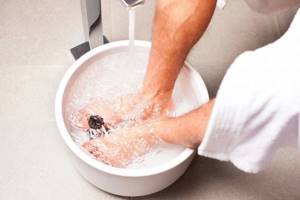
Caring for leather and suede shoes
- Such models can only be cleaned dry. Dirt is removed with a soft brush or sponge. Small stains can be removed with a paper eraser; talc or gasoline will help remove traces of grease.
- Heavy dirt is removed from the surface of suede shoes with a solution of soap and ammonia (20%). The treatment ends by wiping the pair with cool water and then drying.
- Special aerosols, cleaners and other specialized products will help restore the color and restore the pile of a pair of nubuck or suede.
- Clean suede should be treated with a water-repellent spray.
Simple tips to help you care for your shoes in the fall will help you keep any shoe product in its original form:
- Before rubbing the cream, the shoes must be dry, otherwise moisture penetrating into the pores causes the leather to stretch.
- Buy shoes to change, allowing the product to dry thoroughly.
- Diluted vinegar in water will help get rid of salt stains.
- Vaseline or glycerin will help protect the seams from dampness.
How should you care for your shoes in the fall?
During this period, the main enemies of shoes are excessive moisture, as well as sticky dirt, which must be dealt with. The secret to the attractive appearance of footwear for each period of the year lies in caring for them:
- Dirt from boots should be removed immediately upon return. Wash the product or wipe it with a cloth, removing any dirt that may appear.
- When washing leather shoes or boots, use cold or slightly warm water, otherwise you risk softening the leather or glue. For suede and nubuck, use a special brush.
- After cleaning, send the pair to dry; do not leave it near the radiator (heater).
- Use special dryers or paper to remove excess moisture.
- Cleaned and dried shoes need to be treated with special products. For leather - cream matched to the color of the shoes, or colorless. The cream is not a cleaning product; you should not cover stains and dirt with it.
- A high-quality cream improves the elasticity of the skin, prevents it from drying out and gives it water-repellent properties. For application, a special brush or sponge is used, special attention is paid to the front of the pair.
- Lacquered models are cleaned with spray polishes, oils, and creams. However, in their absence, castor oil will also work.
